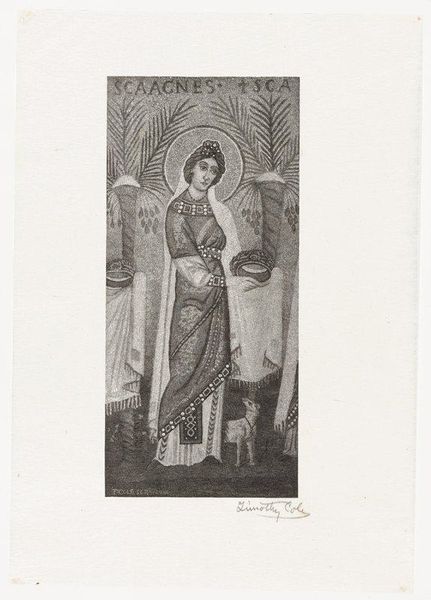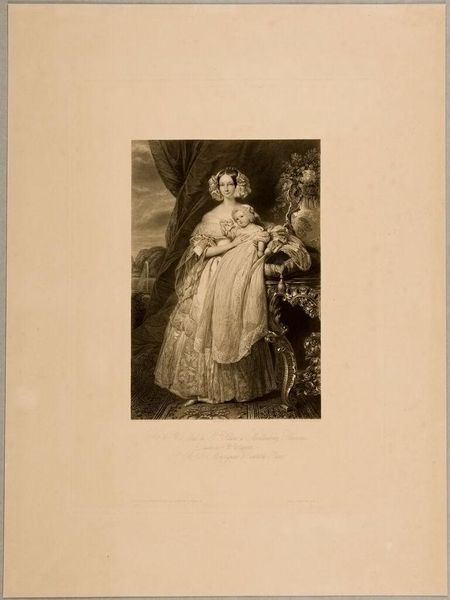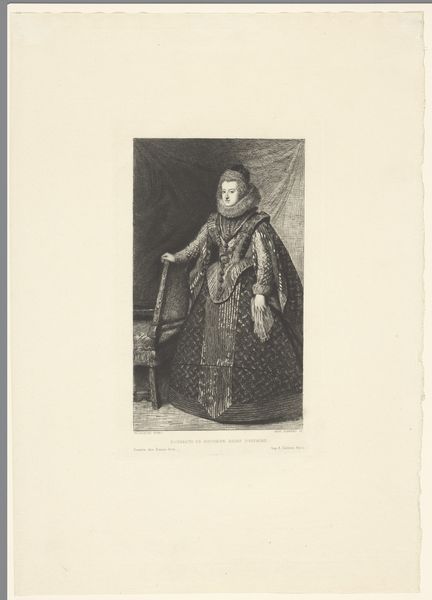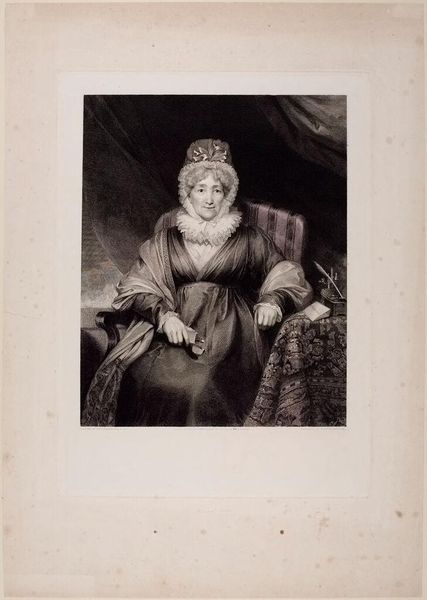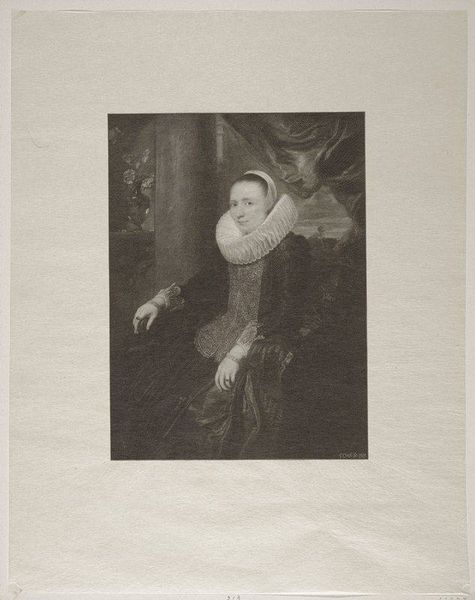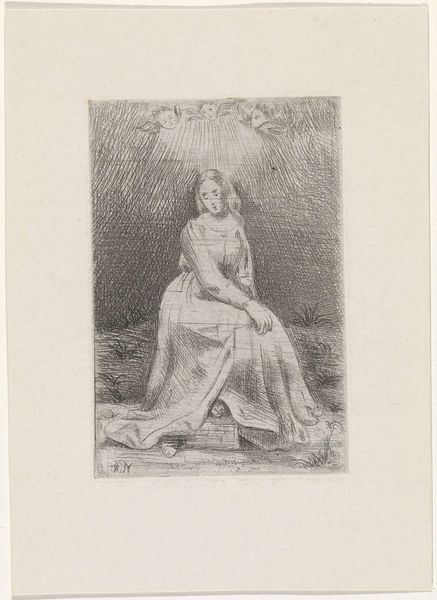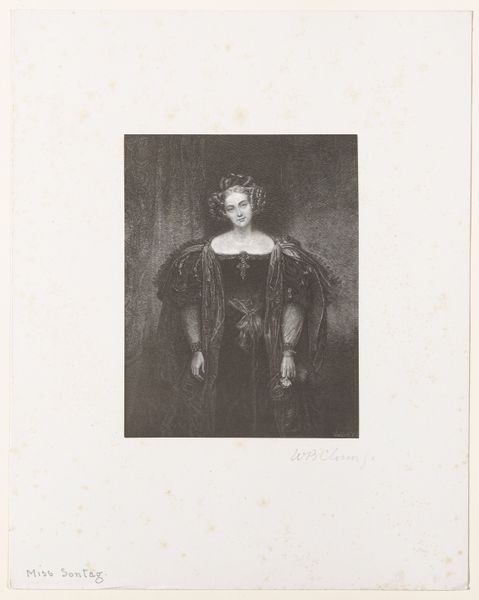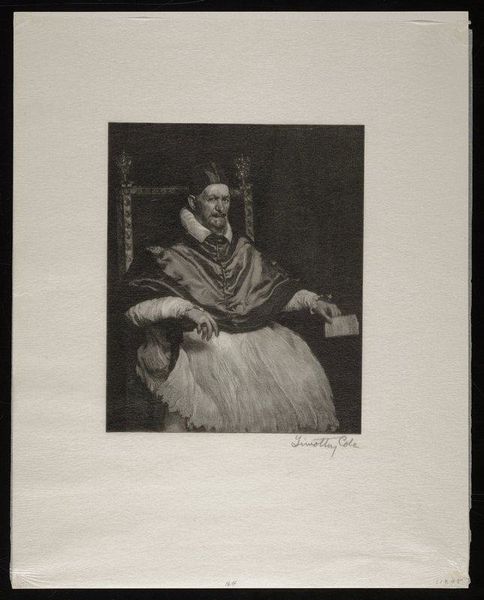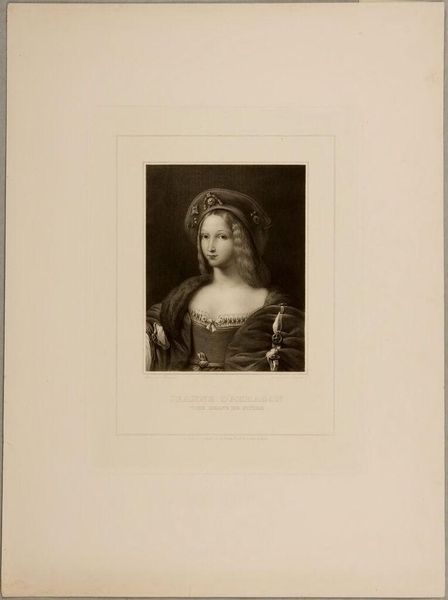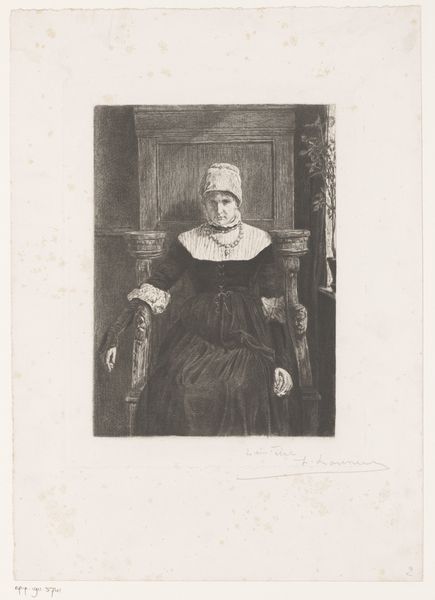
print, engraving
#
portrait
# print
#
old engraving style
#
figuration
#
history-painting
#
engraving
Dimensions: height 269 mm, width 207 mm
Copyright: Rijks Museum: Open Domain
Curator: Here we have an anonymous 19th-century print identified as "Portret van Eleonora van Bourbon," currently residing at the Rijksmuseum. It is crafted with the meticulousness of engraving. What’s your first reaction? Editor: Striking formality, yet rendered in such minute detail. It's interesting how the figure, though small, dominates the visual space with texture—almost suffocating, wouldn't you agree? Curator: Indeed. The artist's rendering in engraving heightens the elaborate fashion, from the millstone collar framing her face to the bejeweled fabric, exemplifies a time when political power was explicitly displayed through such extravagant ornamentation. Editor: Right. This reminds us that prints served as potent tools for disseminating images of power and status, echoing or shaping public opinion. A far cry from contemporary portraits that usually aim for ‘authenticity.’ What semiotic significance do you gather from the abundance of geometric patterns present in this engraving? Curator: These repeating shapes could speak to the cultural ideals of harmony and order that prevailed in society during the High Renaissance and Early Modern eras. At the formal level, the geometrical exactness presents a compelling case study in artistic control. The patterns’ ability to exist harmoniously could reflect ideals around order and balance. Editor: Fascinating. But also consider the implied cost, labor, and sheer inaccessibility embedded in these material signs. The lace, the jewelry—all shout privilege. This isn’t merely a portrait; it is a document illustrating socioeconomic divisions within early modern Europe. In this context, these embellishments become critical rhetorical devices, not just beautiful patterns. Curator: Point taken. Though, do these observations about its social function take away from appreciating the careful composition and refined artistic choices, which give the portrait enduring strength irrespective of subject matter? Editor: Not at all. But understanding context deepens our perception and acknowledges that art doesn’t exist in isolation. Works such as these shape and mirror their culture. This print of Eleanor, once an instrument for affirming hierarchical structures, now gives insight into power dynamics embedded within our viewing culture, reminding us how artwork retains relevancy over centuries. Curator: Indeed, that dual nature—the aesthetic versus its history—remains the crucial thing to remember as we engage with older forms of artistic expression. Editor: An important distinction for us all, especially today.
Comments
No comments
Be the first to comment and join the conversation on the ultimate creative platform.

